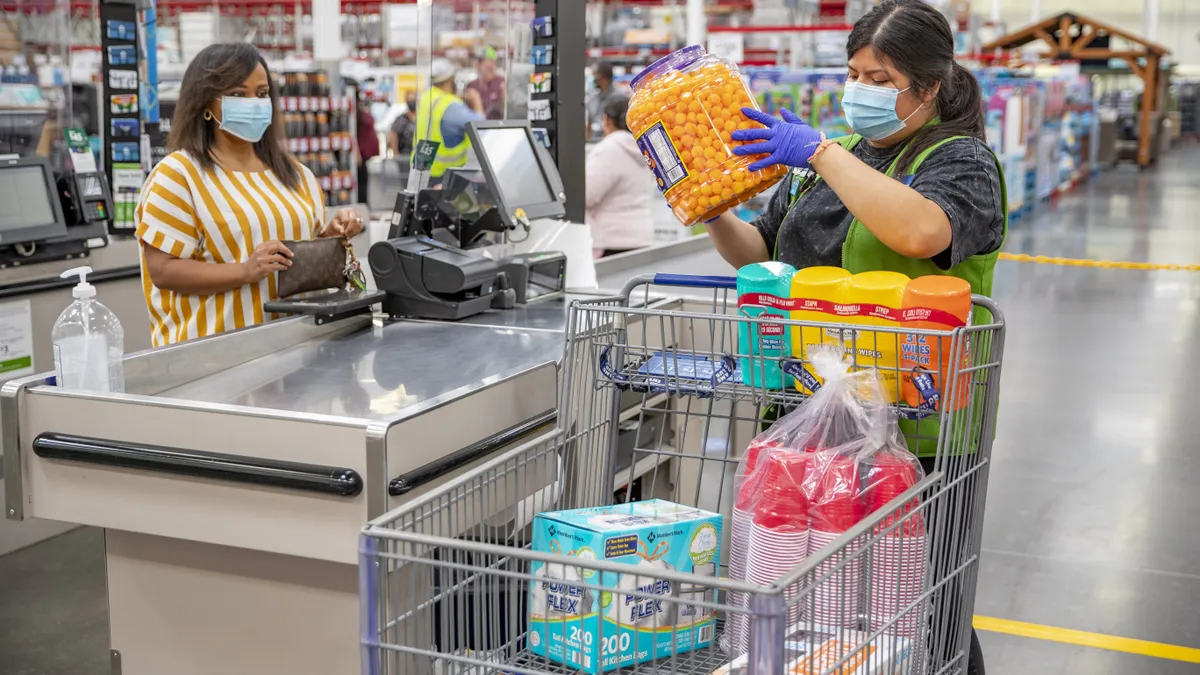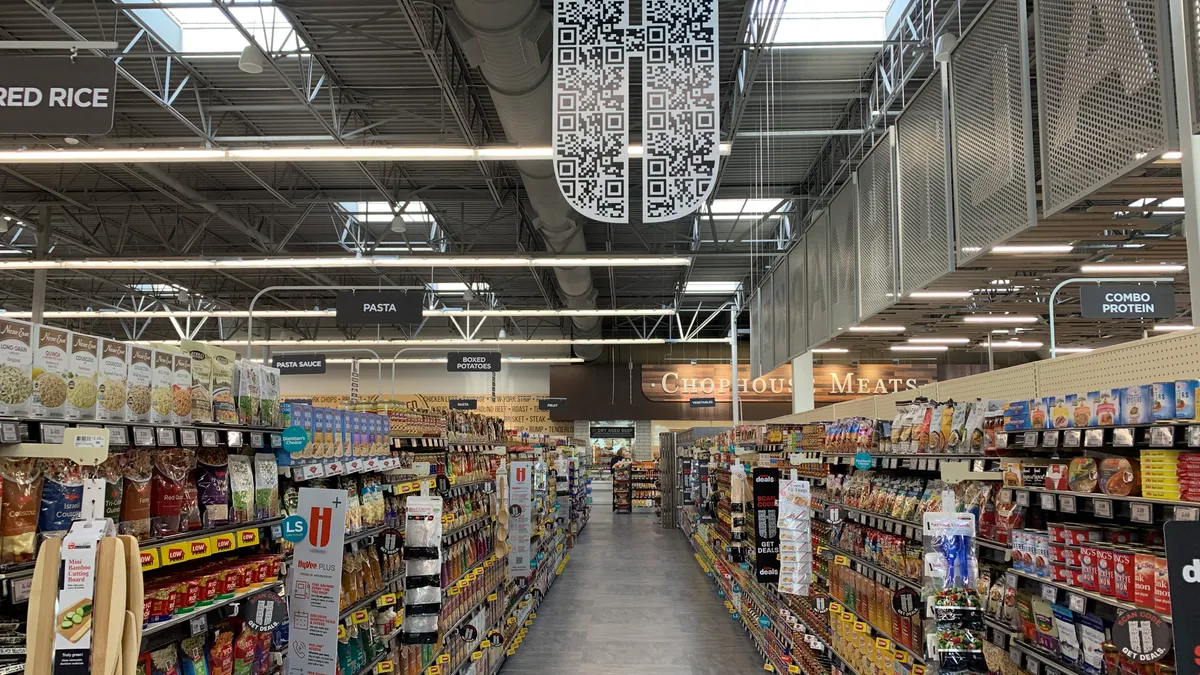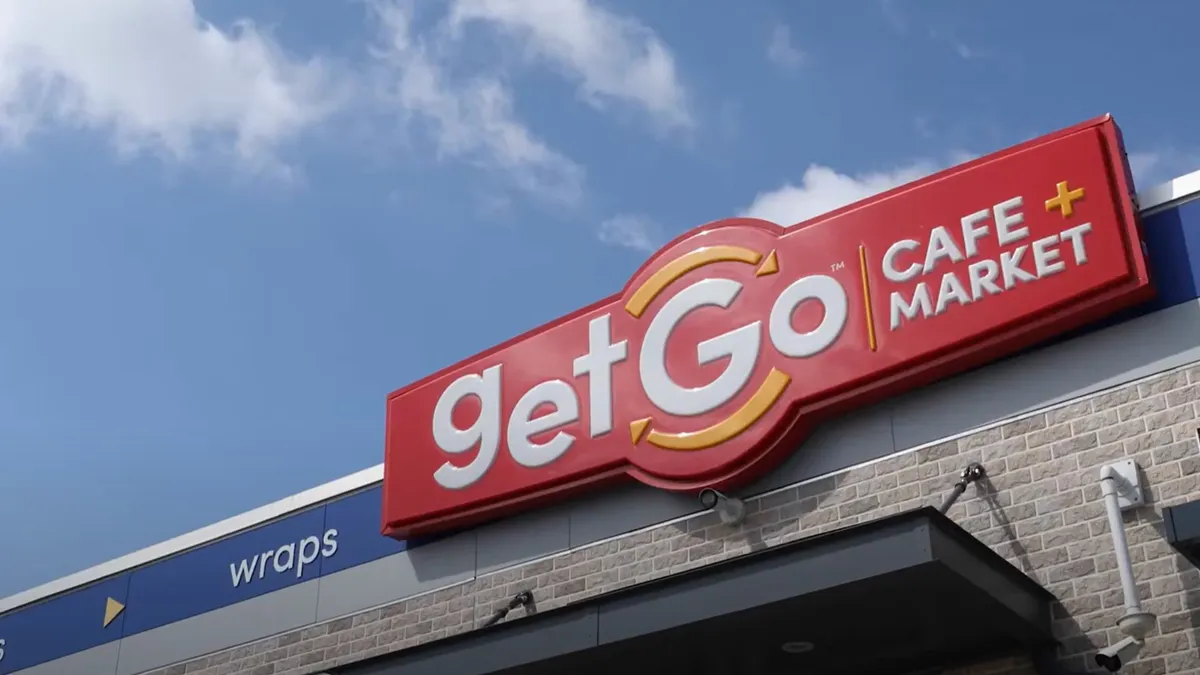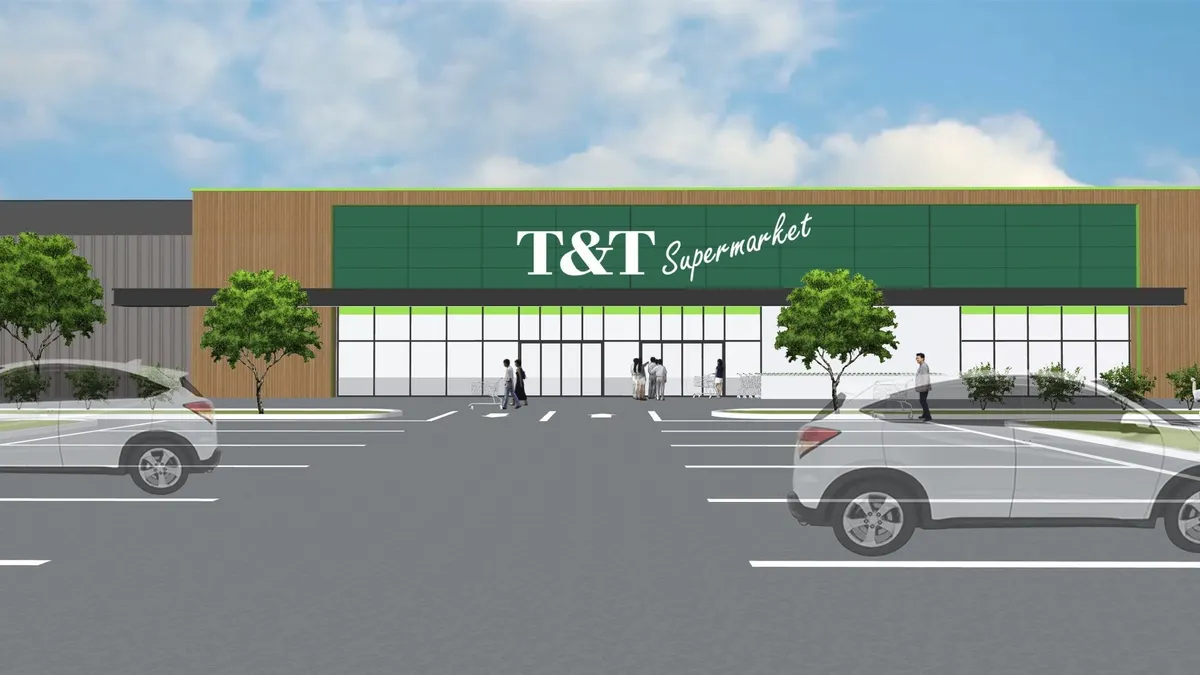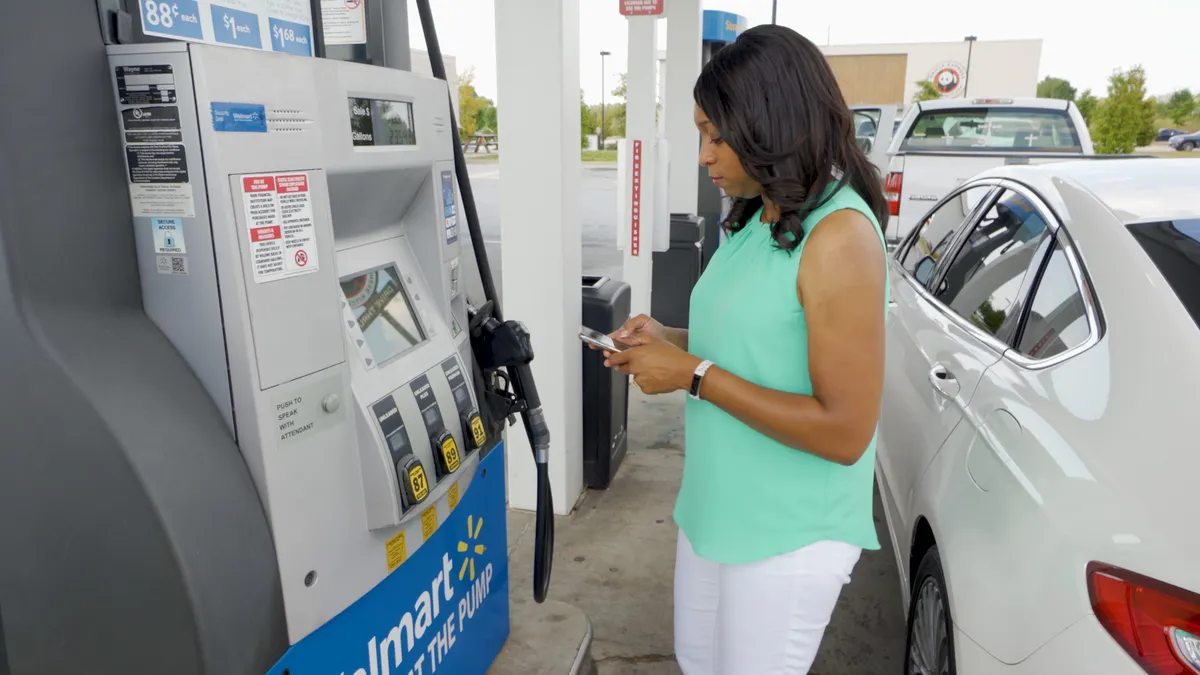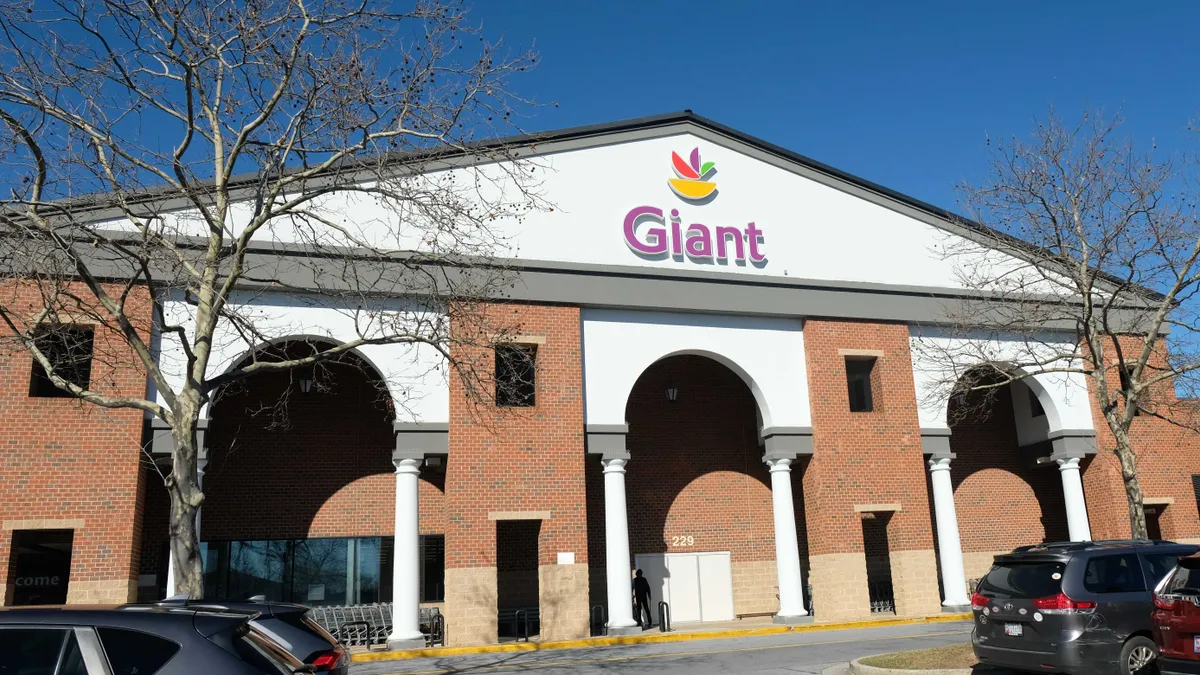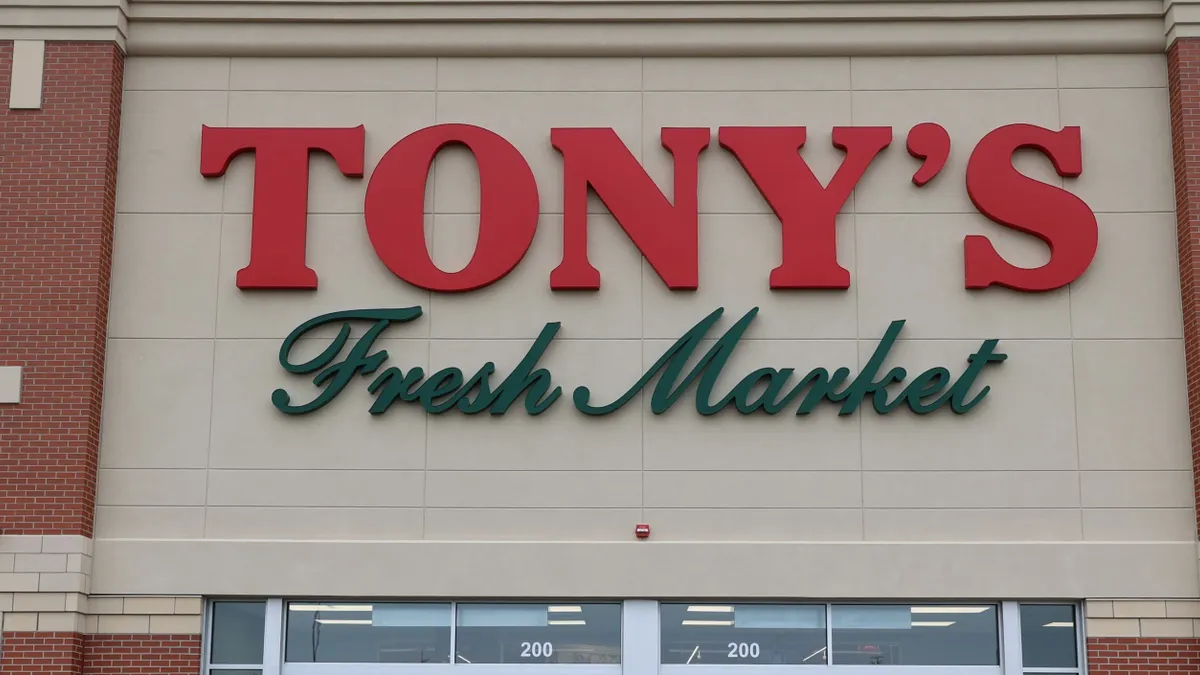Grocers have enacted numerous safety protocols to protect their shoppers and employees from the coronavirus while also balancing local government regulations. These range from requiring customers to wear masks and limiting store capacity to implementing one-way aisles and rigorous cleaning regimens.
As the coronavirus continues to spread in communities throughout the U.S., with health experts predicting a surge in cases during the fall and winter months, grocers are examining their procedures to make sure they're doing everything they can to prevent the virus from spreading. They've implemented some new policies recently (face masks) and are letting others go by the wayside (one-way aisles).
Grocery Dive talked to Marissa Baker, an assistant professor at the University of Washington's Department of Environmental and Occupational Health Sciences who is currently evaluating grocery store safety protocols as part of a forthcoming study, about the efficacy of these various initiatives and what else grocers could be doing.
This interview has been edited for length and clarity.
GROCERY DIVE: What do you think are the most effective protocols grocers are taking?
MARISSA BAKER: The most effective are going to be the controls that eliminate the transfer of droplets between people. So having all of their workers in masks, ensuring that all shoppers are in masks, and having plexiglass screens as a physical barrier between the shopper and the workers. Implementing controls that keep people farther away from each other is also effective, whether that's limiting the number of shoppers who are allowed in a store and trying to put out stickers or other markings to keep people separated while they're waiting in line.
Is continuously cleaning stores a good use of resources?
BAKER: Cleaning down everything probably doesn't need to happen as much as some of the other controls. We know that there's not as much risk of transmission just by putting your groceries on a checkout lane that someone else has used. The time spent cleaning the checkout lanes between every individual shopper, and self-checkout lanes and the credit card payment devices, are less effective controls for COVID-19.
What are your thoughts on one-way aisles?
BAKER: The controls only work if people actually follow them. So while it seems as if that could be promising because you're limiting the number of people and everyone's facing the same direction so you're not having people coughing on you and passing you, that type of control is one that's very hard to actually get people to follow.
So again, those that we know can be protective, that have a lower barrier to acceptability and compliance, are what should be focused on.
Are indoor retail environments where people are required to wear a face mask inherently safer than those that don't have a mandate in place?
BAKER: I would say that anytime you have people in an indoor environment, in close proximity for extended periods of time, which is most grocery stores, face masks should be required and aligns with public health guidance. It creates a safer environment for the workers and for the shoppers and protects both folks from spreading droplets with each other.
What are your thoughts on the reusable bag bans we're seeing?
BAKER: There has been so much movement in the past to move to reusable bags, and now it feels like a lot of that momentum has stopped or even worse, we've taken two steps back. That's a control that I think given how the disease spreads, there's not a very high chance of spreading anything by bringing in a reusable bag.
I'd love to see that come back from the environmental perspective and under the recognition that that's probably not how we're spreading the disease. We really should be focusing on respiratory droplets and the airborne droplets in the store. I hope that that is something that we can resume.
Grocers seem to be divided on the concept of senior shopping hours and are wondering whether that practice should persist. What do you think?
BAKER: I will say I like the idea of vulnerable population shopping hours or senior shopping hours. That I could see being something that might persist, especially in neighborhoods or trade areas where they tend to serve an older population. I think that can be valuable not just for disease and infection control, but also in terms of giving the shoppers a little more time and a little more space in the hours of the day that aren't very busy.
Should grocers keep customer capacity limits in place even if infection rates start to decline in their communities?
BAKER: In terms of capacity limits, the more people you have, the harder it is to socially distance, the more important it is that all other controls are used perfectly. I could see that persisting even as people are allowed to not wear a mask.
What is something grocers should be doing that they aren’t currently?
BAKER: I should also mention HVAC and ventilation systems. I see that as something that can be an expensive investment but that can really help with moving air through and stopping some virus transmission. It's kind of the same as having windows open and doors open. Even certain filters can really help clean the air.
That could be something I could see a grocery store saying: We want to invest in upgrading our HVAC or ventilation system so we don't have to be as careful about [customer] numbers and about masks. If they choose not to do any ventilation controls, they might have to be more careful with requiring masks and limiting the number of people in the store.
Is there anything besides HVAC system?
BAKER: One thing that I have seen and thought about is customer compliance with the controls, and in particular customer compliance with mask wearing. There are a lot of instances, unfortunately, of a customer being told they have to wear a mask, getting angry, and then it leads to violence or bullying,
Any time you're controlling one hazard, you don't want to then be causing another problem. So I really don't like the idea of positioning someone who's usually a checker or a stockist by the door to make sure people are complying with masks. That's really tricky. Those workers are not trained to be doing that and it puts them in a very vulnerable position.
I think grocers need to better think through how they are going to enforce these rules, some of which are suggestions, some of which are state law. How are we going to enforce that in a way that doesn't put the employees at further risk of harassment or violence at work?



